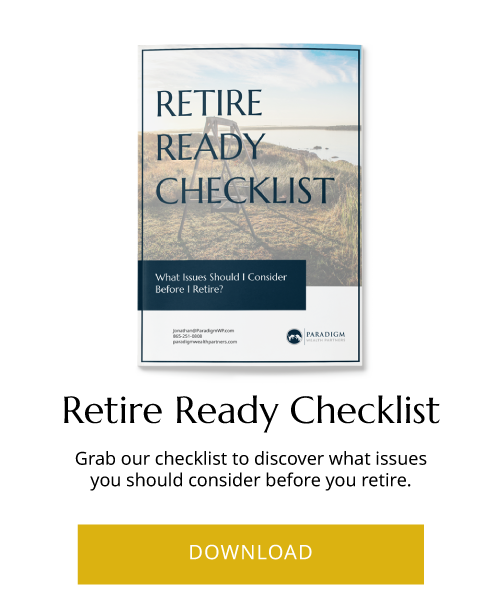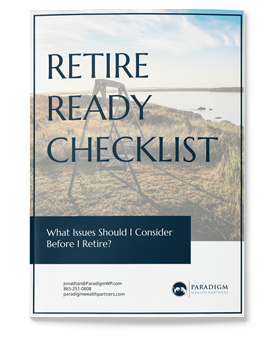Stuck in the Middle: The Sandwich Generation
Parenting children of all ages has its challenges, but research shows that children aged 12 to 14 are the most difficult. Unfortunately for some parents, this difficult age can coincide with their own parents declining health and additional needs, which sometimes include financial needs.
People in this situation are called “the sandwich generation,” caught between meeting their children’s needs while simultaneously meeting the needs of their aging parents. We’ll discuss the sandwich generation, why this demographic is growing, the impact on those stuck in the middle, and how the children of aging parents can help them plan for their financial and healthcare needs.
The Sandwich Generation
Those in the sandwich generation are most typically aged between 40 and 60, and it’s estimated that one in seven Americans in that age range are providing financial support to a child and a parent simultaneously. About 12% of all parents are part of the sandwich generation, working full-time while spending approximately three hours a day caring for children and parents. More than half of these caregivers are women. There is a sub-set of the sandwich generation who are also helping care for grandchildren.
Many in the sandwich generation have estimated that they’ve lost more than $10,000 caring for their family members. The figure doesn’t represent the money they’ve spent but rather the money they’ve forgone in the form of missed work, missed overtime, promotions, etc., because of their family commitments.
A Growing Problem
Several factors have contributed to the growth of the sandwich generation. Women are having children at a later age than in the past. The average age for a first-time mother in 1975 was 23.4, and the average age now is 30, a record high. Life expectancy continues to increase. In 1975, the average was 68.8 for men and 76.6 for women. Currently, the overall average is 79.05.
So older parents will still have children at home when their own parents reach an age when they need additional help, and living longer doesn’t necessarily mean living better. The older we get, the more support we often require, both physical and financial in some cases.
Americans also don’t stay in one place anymore. While the majority, 55% of us, live within an hour of extended family, that means 45% of us don’t. That can mean less help is available from siblings, cousins, aunts, uncles, and other family members when it comes to both childcare and eldercare.
The Effects
Being a caretaker is always difficult. It can be devastating when that difficulty is amplified by having to take care of two or three generations. Imagine working a full day and coming home to make dinner, help with homework, ferry kids to and from events, arrange medical appointments, make dinner, and food shop for two households. And those are just a few tasks on a caretaker’s to-do list.
It can cause anger, frustration, and burnout, and it doesn’t take long. It can also cause fights between spouses, the caretaker, and their parents, children, unhelpful siblings, and friends. If you even get to see friends long enough to get into a fight! And it can mean delaying your own retirement if there is a financial component to the caretaking role.
Decreasing the Burden
The best thing you can do if you’re in or want to avoid being part of the sandwich generation is to communicate.
Your Parents
Discuss what your parents want and what they have in place:
- Do they want to live at home as long as possible?
- Do they want professional in-home caregivers?
- Do they expect to live with you?
- Are they open to assisted living?
- Do they have a healthcare directive?
- Do they have an estate plan?
- Do they have long-term care insurance?
- How much money do they have, cash, investments, pensions, etc.?
Your Spouse
In-laws don’t always have the best relationship. If this is true in your family, it can make balancing your home life and caring for your parents even more fraught. Speak to your spouse about your parents’ expectations and how much you’re willing to do.
Extended Family
Whether your family is near or far, they should be included when planning for the care of your parents. I’ve seen it many times in my practice. The burden often falls entirely onto the shoulders of the child who lives closest to the parents.
I won’t go as far as to say everyone should contribute. Families can be complicated, and not every family is close and loving. If family members refuse to help, it may be necessary to look for outside help.
Financial Planning
The best weapons in your arsenal when it comes to helping aging parents are a solid financial and estate plan for them, and the most important part of those plans is long-term care insurance. Medicare does not cover long-term care, and it’s expensive.
Each year Genworth publishes an eye-opening study on the costs of long-term care. Here are some recent numbers for monthly median costs in 2021:
- Homemaker services: $4,957
- Home health aid: $5,148
- Adult day health care: $1,690
- Assisted living facility: $4,500
- Nursing home facility semi-private room: $7,908
- Nursing home facility private room: $9,035
If your parents don’t have a retirement and estate plan, now is the time; even if they’re already retired, it’s not too late. A financial planner specializing in these fields can help ease your and your parent’s minds.
If you or your parents need to create a plan, we’re here to help so all of you can Create The Life You Love.



